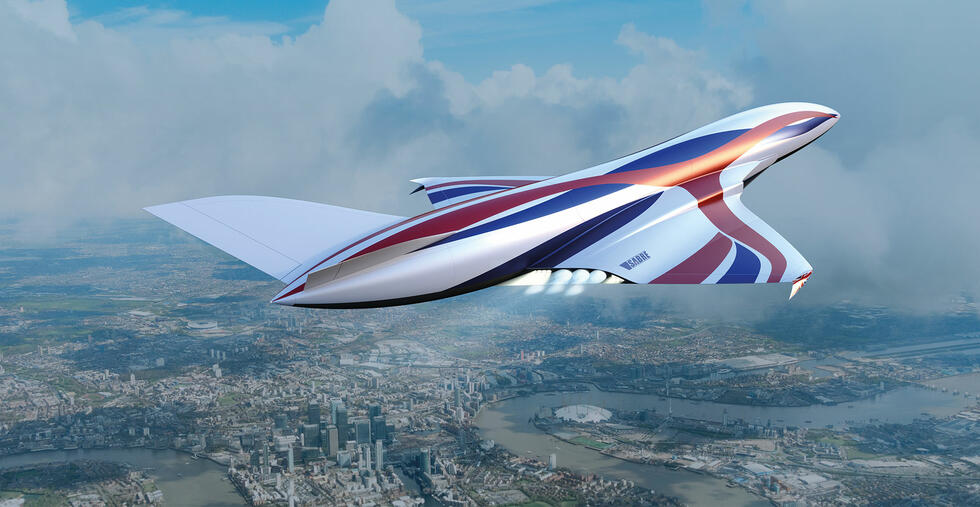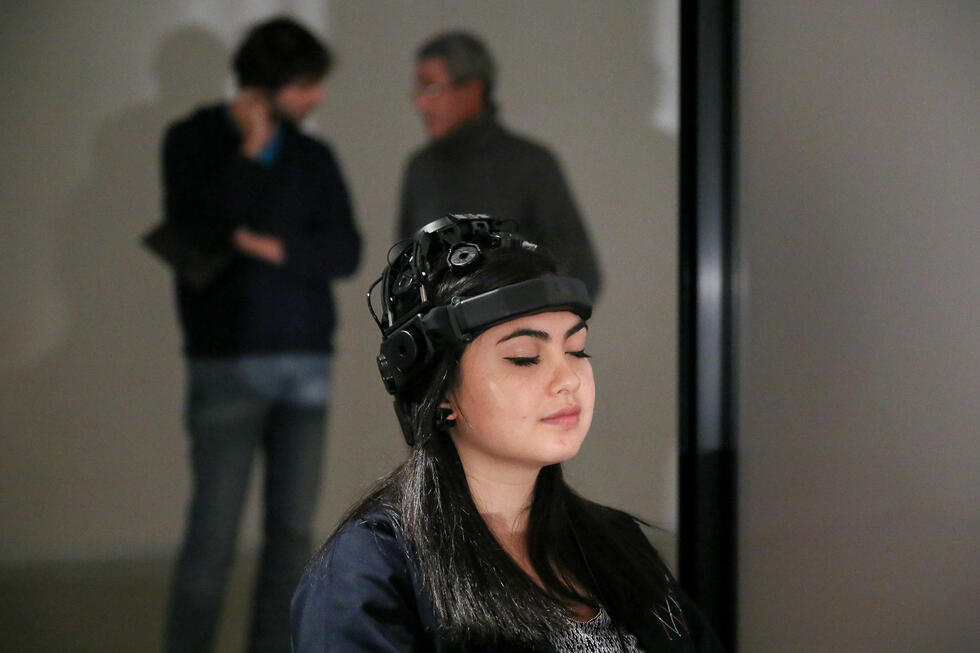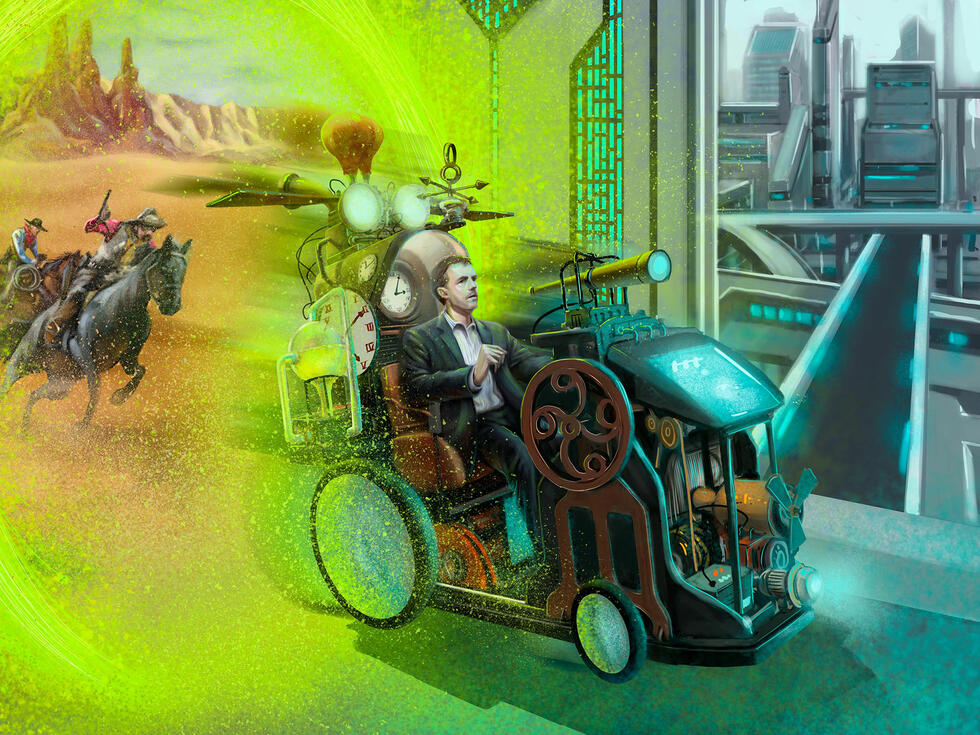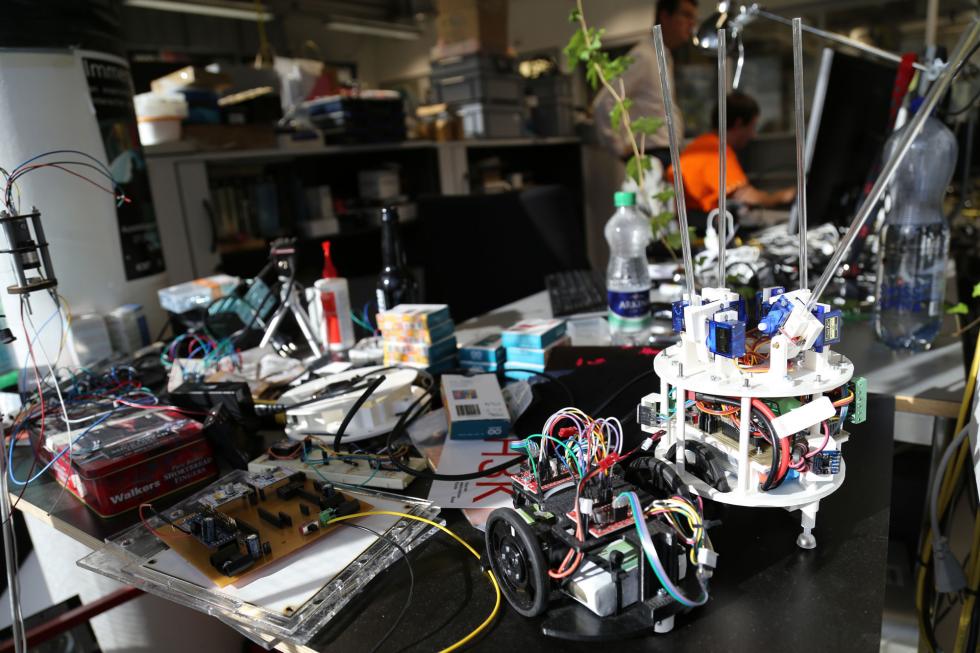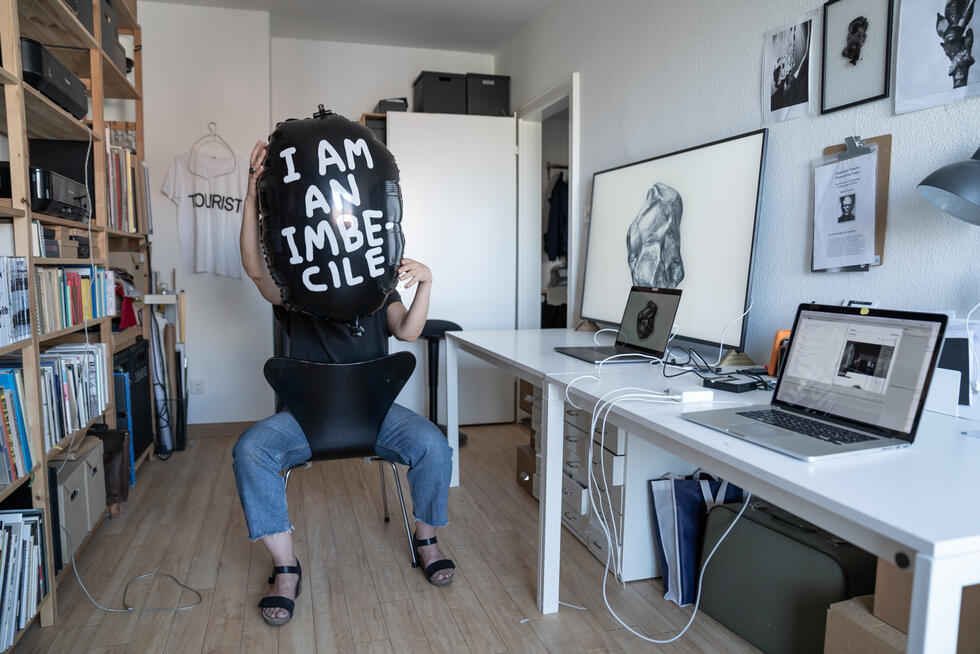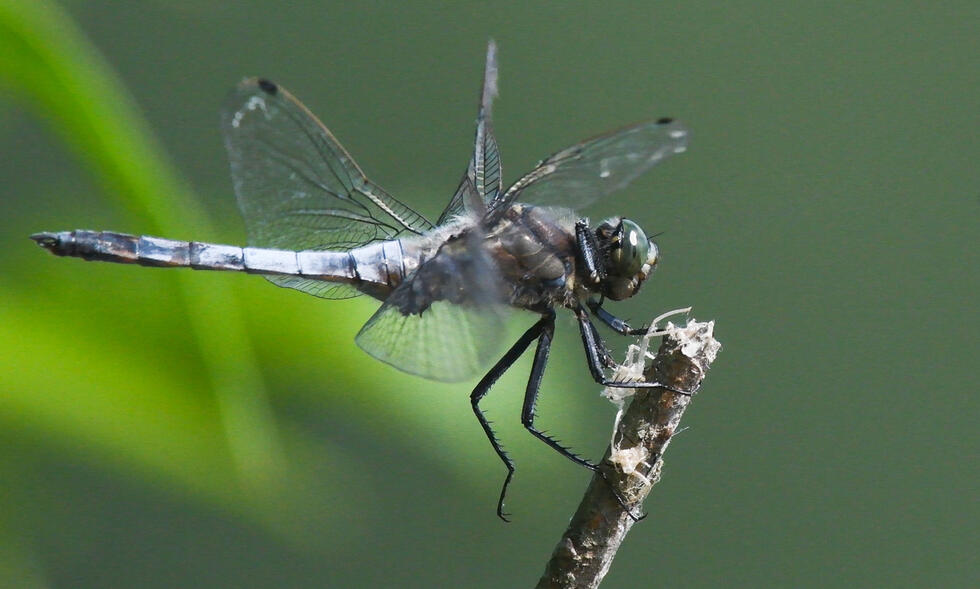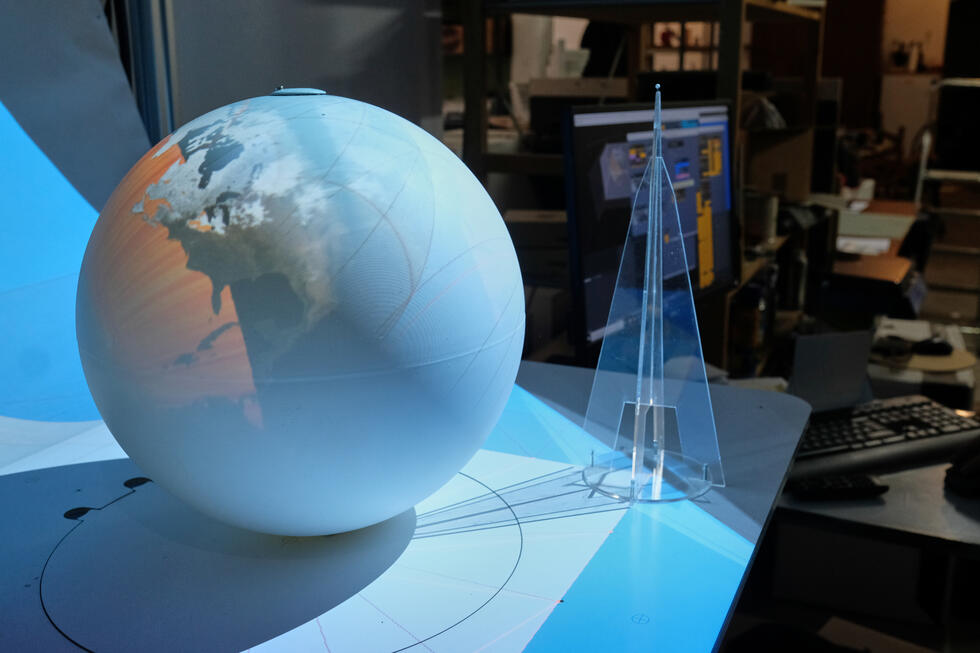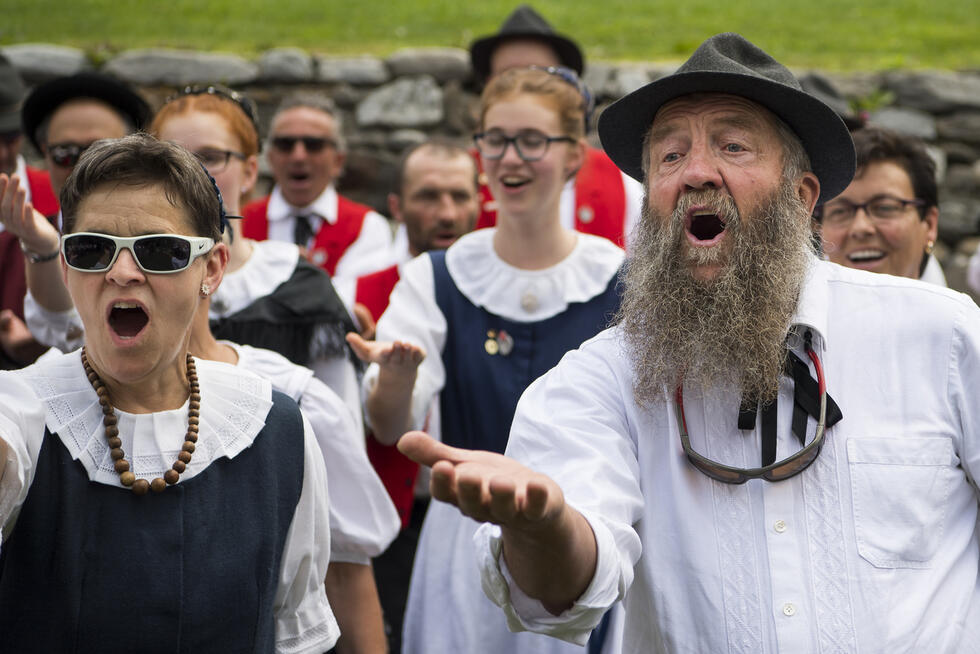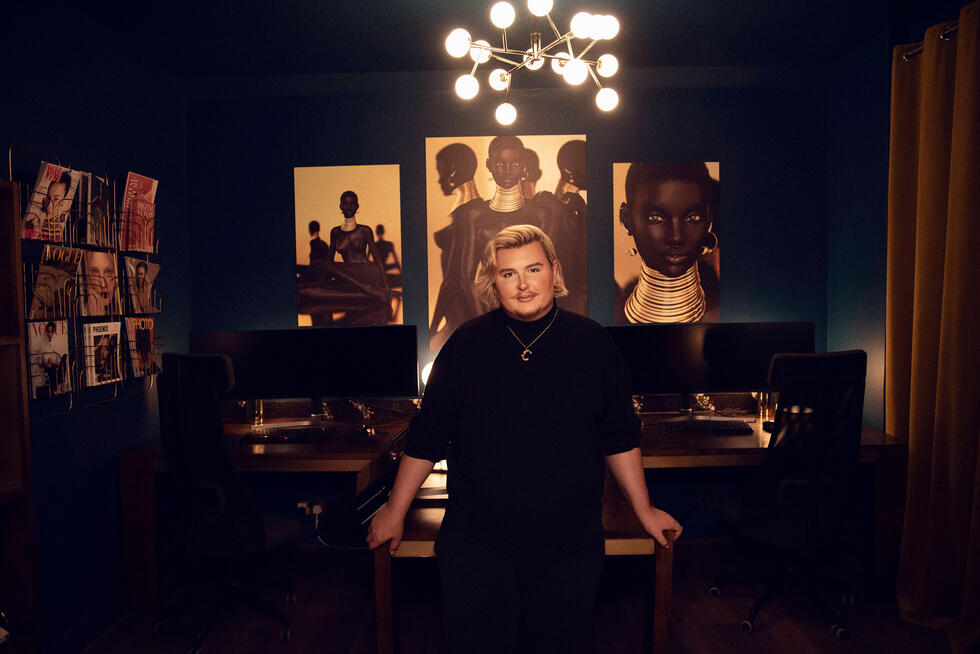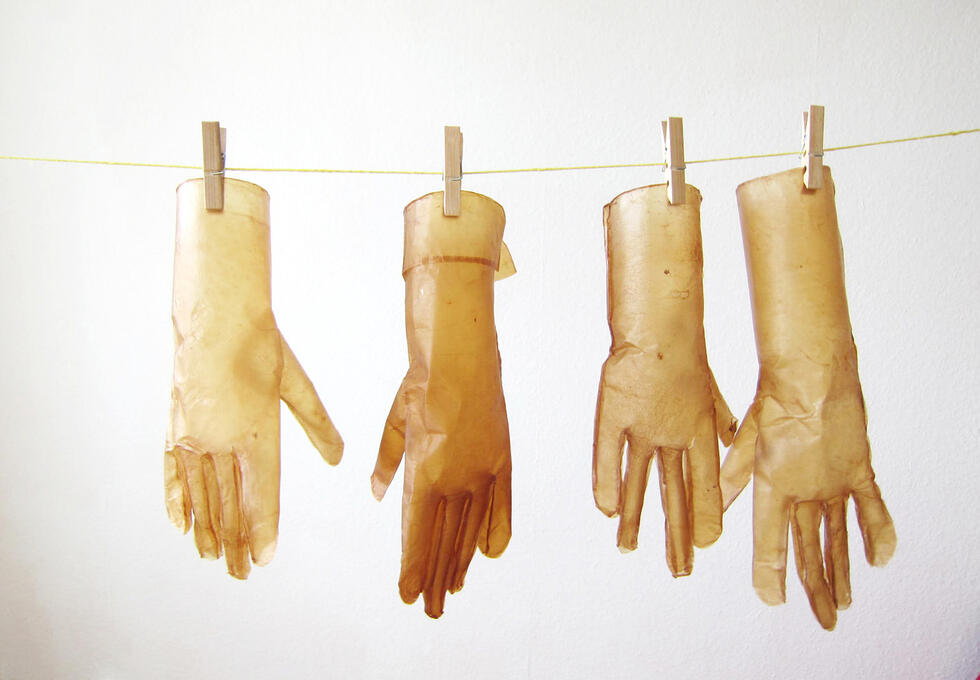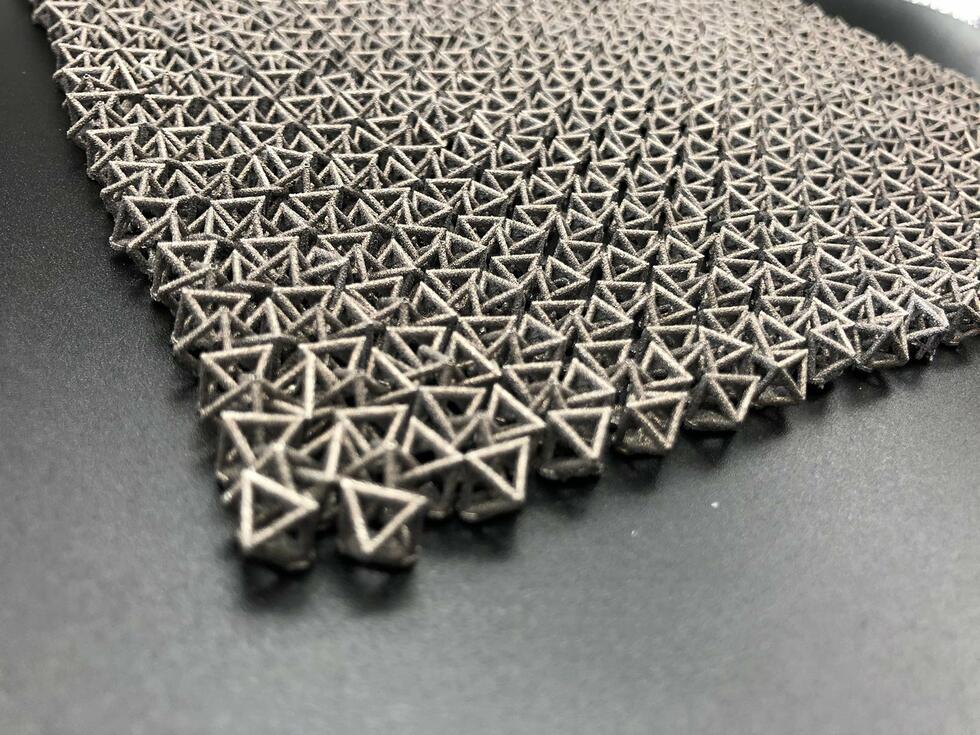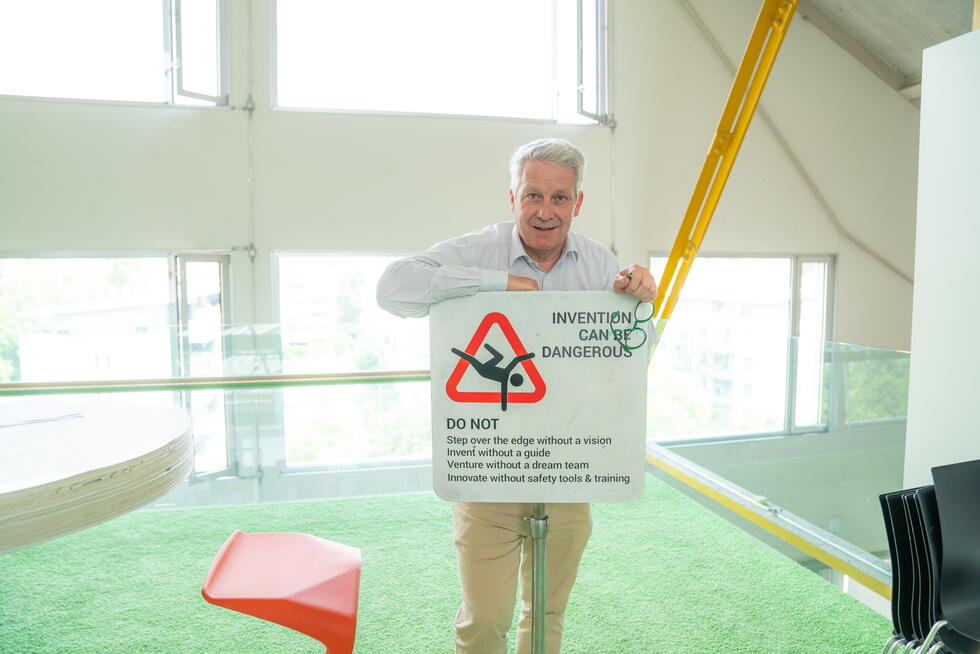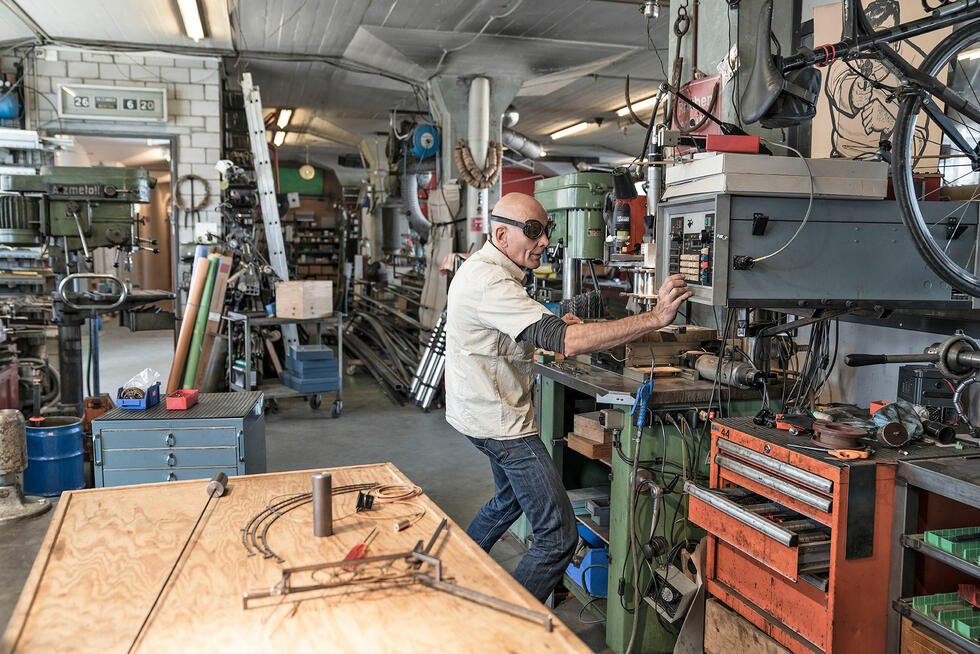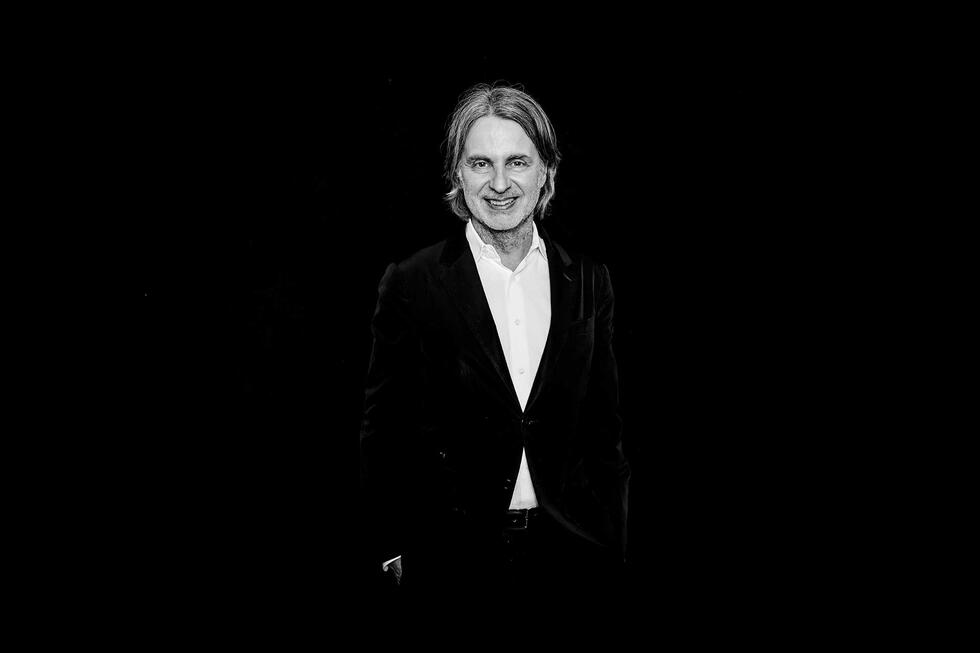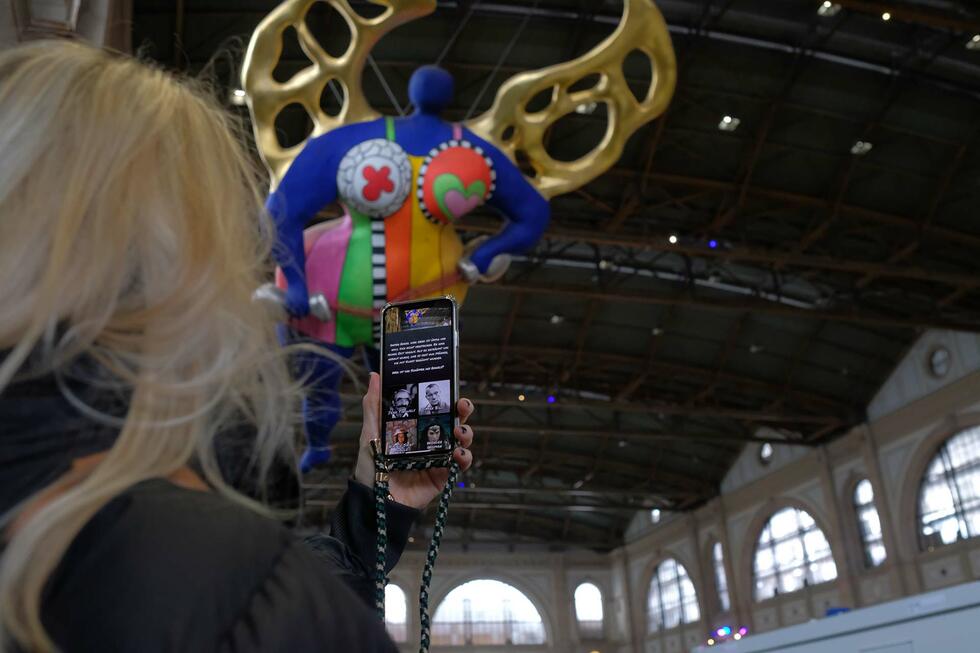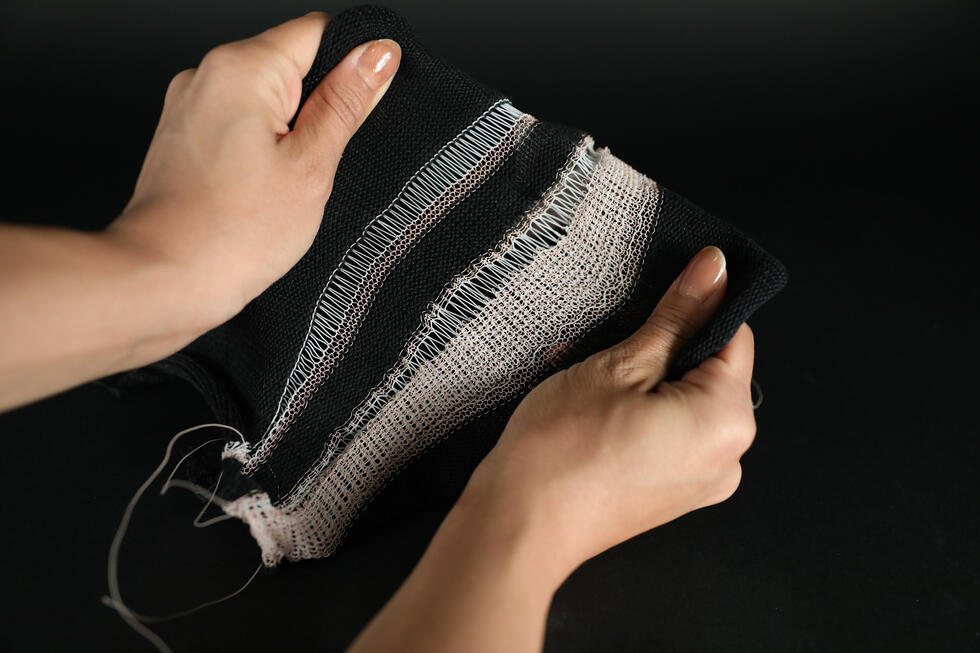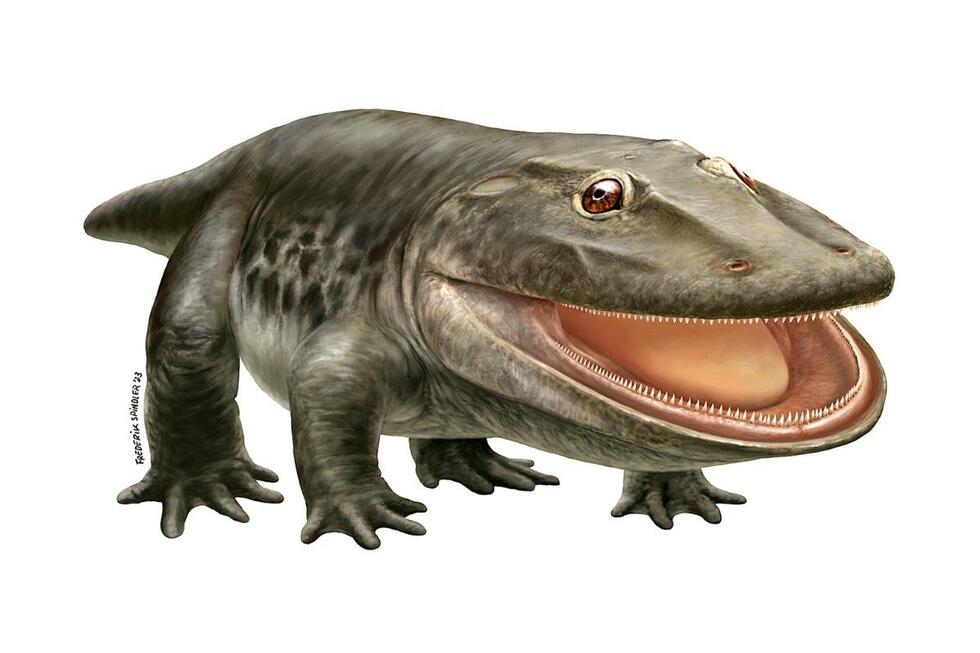How an artist taught iron to fly
Swiss artist Heiko Schütz creates sculptures from iron letters, including iron spheres. One of these spheres regularly rises into the air in the shape of a balloon. A studio visit with a witty ironworker.
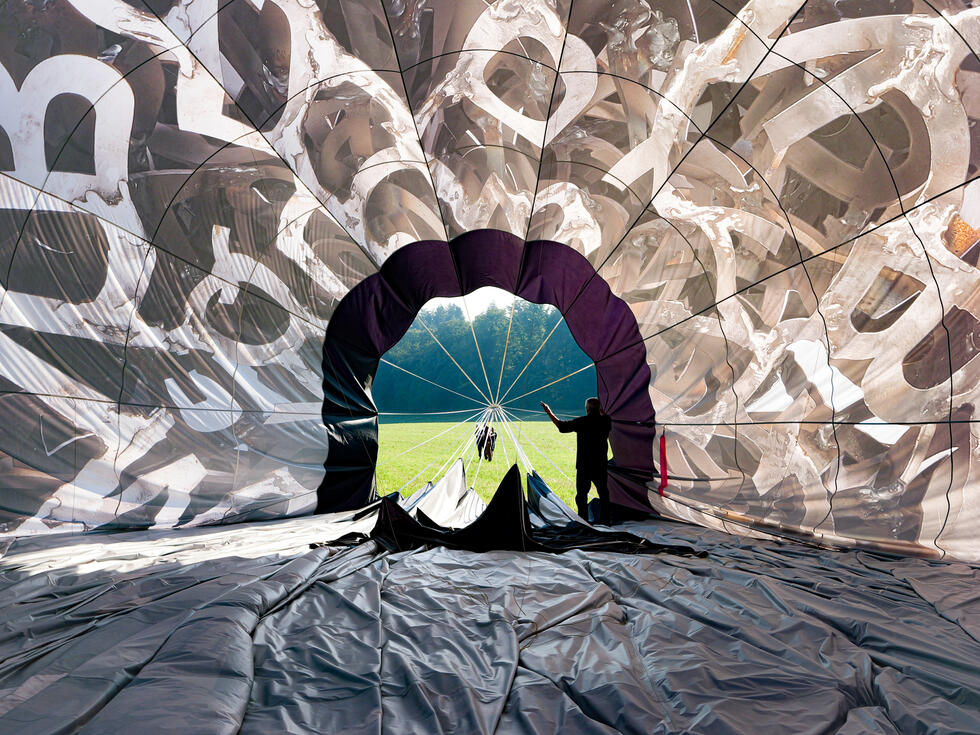
Heiko Schütz laughs harshly. Mischievous face, gnarled craftsman's hands on the heavy wooden table in the kitchen. "I was so scared that I hid in the basement," he says. We are sitting in the kitchen of a farmhouse in Niederönz, where the 69-year-old lives with his wife. We are warming up. A few minutes earlier, we were standing in Schütz's sculpture garden in a field behind the house, an icy winter wind whistling through the rusty iron sculptures.
The garden is a museum of Schütz's 50 years of work: Strange-looking faces on tall iron stilts, reminiscent of Picasso, stand next to iron knots that wrap around themselves; next to them, steel beams painted light gray, full of holes and bent, as if a bomb had hit; at the end of the field, a slab full of superimposed letters that reveal a face depending on the incoming light. "I work intuitively, thematically," he says. Once he's exhausted himself, he turns to the next subject.
Schütz's career as an artist began in the area around his birthplace of Kirchberg near Berne. He completed an apprenticeship as a machine mechanic, but quickly realized that tenth-of-a-millimeter work with metals doesn't appeal to him. He much preferd to collect scrap metals and weld them together into pictorial objects. "My first sculpture was snatched up by my master teacher and put up in his office next to the diploma theses," he says with a grin. Schütz proved to be a talented welder, and when he met Bernese iron sculptor Bernhard Luginbühl a short time later, the latter took him under his wing. Shortly afterwards, Schütz also met Jean Tinguely and occasionally performed welding work for him. He gets to know an art world full of happenings and events, with people, stagings, fires and festivities around the huge iron sculptures.
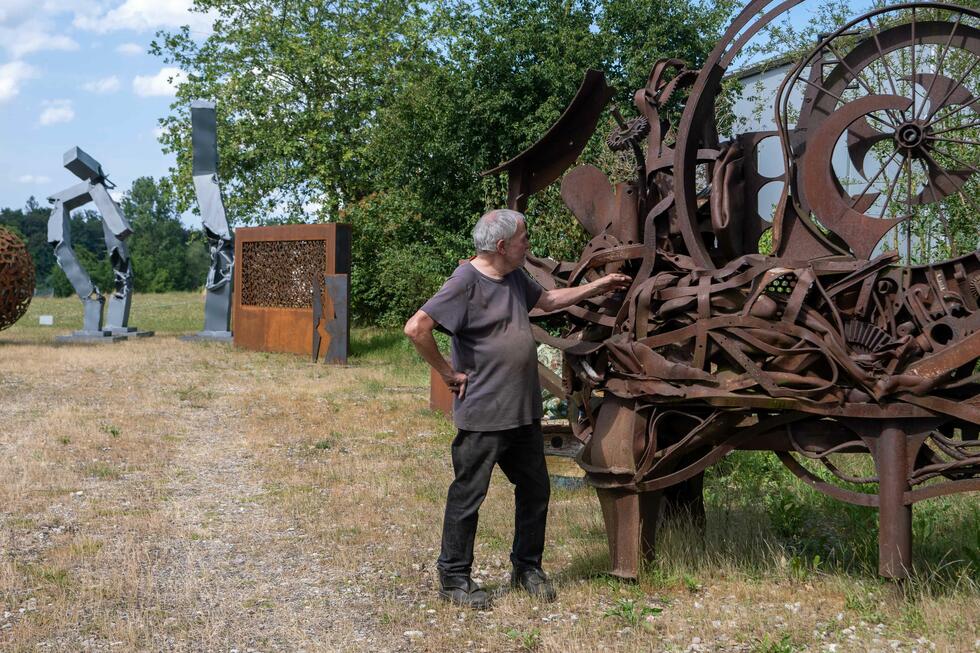
"I also realized that you could make a living from art and knew that was my thing!" he says. But Luginbühl and Tinguely also make it clear to him that he will only make it if he finds his own artistic language. "They honed me," says Schütz. One day he has the bright idea: He designs his first iron picture book - a hinged, iron book inside which iron pages with letters and shapes can be turned. "Now you're ready," Luginbühl and Tinguely confirm him.
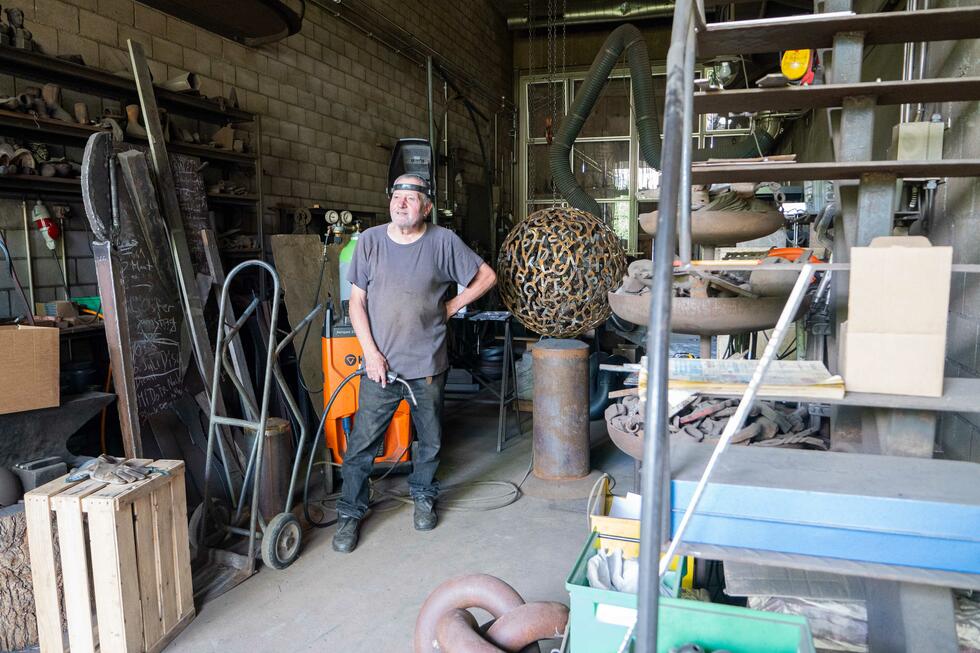
Iron sculptures from Schütz's oeuvre - large as well as small - can be found not only in the sculpture garden, but all over the estate. In front of the entrance to his workshop stands a tribute to Jean Tinguely - a ball game with an abstract beret and a feather as decoration. "The sculpture was at Zurich Airport for a while," Schütz says. The studio smells of iron; at first glance, it's a rusty mess. He always works on several pieces at once, he says: heavy stone girders with bent iron plates, eventually to be turned into a bar with glass slats. A pointed hexagonal pyramid will hide an invisible fire and come to stand in a hammam. Iron letters in a message in a bottle form the word "BLUBS."
Sometimes I just like to provoke. Heiko Schütz
For him, art has always been a tightrope walk, including financially, says Schütz. Although his works can be found in numerous places in Switzerland and abroad - individual pieces have traveled to almost every continent - Schütz has also always carried out commissioned work. "I never really felt comfortable in artists' circles," he says. The scene was too aloof for him, the ironworker. Once there was even a collection of signatures against him, organized by other artists - because he had already received another commissioned work from the canton. "Sometimes I just like to provoke," he says and grins.
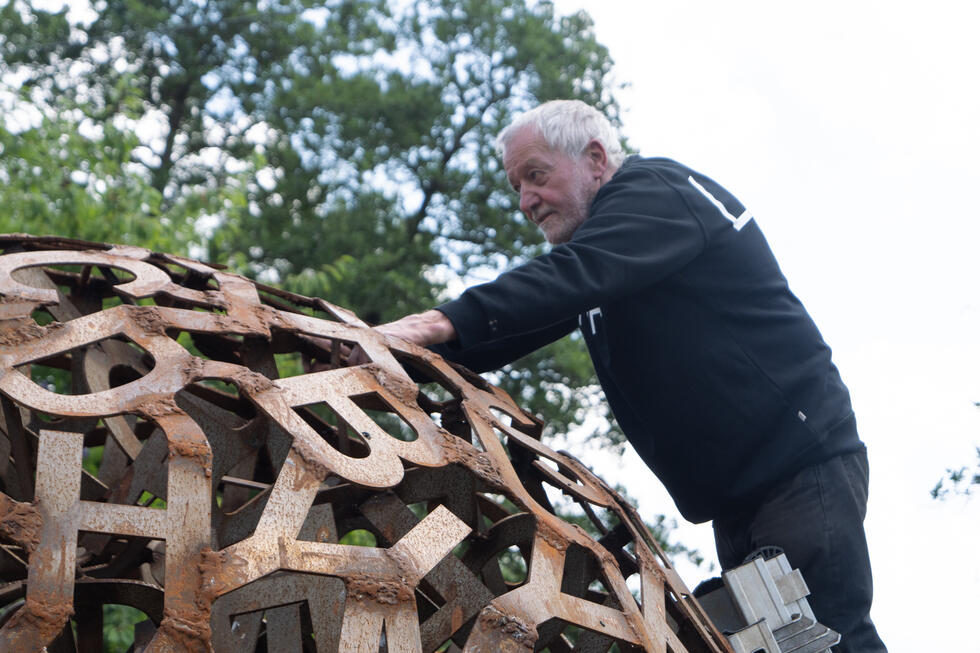
One day he had the idea of working with iron letters. With these, he can not only fill iron books and bottles, but also weld them together to form large structures. Initially, he had the letters produced on a trial basis at Bystronic - the company, which specializes in sheet metal processing and laser cutting machines, is located just a few hundred meters from Schütz's house.
As the volume of letters grew, he switched to a local metalworking company (see box). As a result, numerous new thematic sculptures are created: a painting in the sculpture garden made up of letters reveals a face when the light hits it just right - the work is created in collaboration with artist Simon Berger, who is known for making faces visible in shattered glass. One of Schütz's latest works is called "Plow Factory Tower": a structure with letters almost as tall as a man, rising twelve meters into the sky. It is intended to commemorate both Bern's industrial history and Schütz's father, who constructed plows. At the same time as the tower is being built, the artist begins to weld spheres out of the letters.
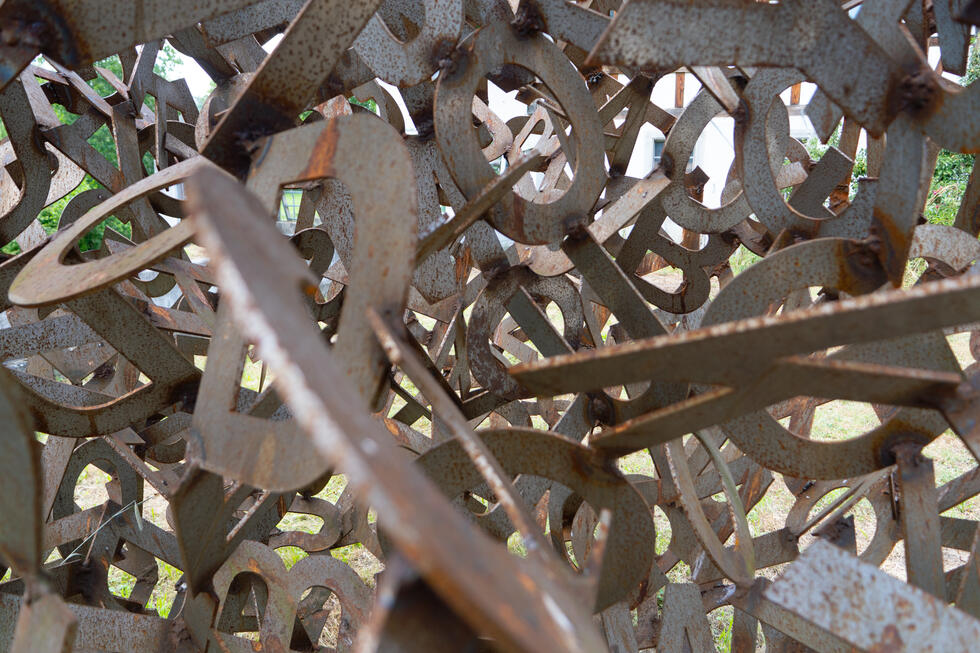
Which brings Schütz's fear into play. The artist Andreas Althaus, a friend of Schütz, designed an exhibition card with an image of the largest iron ball called "Wortlos" (wordless): it showed the iron ball as a balloon floating over the Alps. The idea struck a chord - also with the president of the board of the Rentsch Cultural Foundation. During the exhibition, he thinks that this balloon should really exist - the illusion of an iron ball floating over the landscape. Schütz is convinced and remembers a friend who is a balloonist. But before he is willing to help with the idea, he wants to take Schütz on a balloon ride. One day, he shows up with a balloon in front of Schütz's estate - and the artist, overwhelmed by the idea of the impending flight, holes up somewhere in the basement and can no longer be found. Until Schütz overcomes his fear and finally ventures on the maiden voyage.
It was an incredible feeling to see the iron ball inflated as a giant balloon. Heiko Schütz
With that, the project also begins to take off. The hot air balloon is to become a flying "Tromp l'Oeil": Not only the letters, but also their backs on the inside of the envelope as well as the spaces in between with a view of the sky are to be depicted - as if a real iron ball weighing tons were floating through the air as light as a feather. To have the shell printed, manufacturers need a template. Schütz reproduces the sphere once again, but this time it is unfolded and flat. He and a specialized team work on the artwork for four weeks. When it is ready, the balloon is printed, sewn and finally filled with hot air for the first time at the manufacturing site in Spain - the iron flies. "It was an incredible feeling to see the iron ball inflated as a giant balloon," says Schütz proudly. Since then, he has already gone up several times with his iron letter balloon. The fear has since faded.
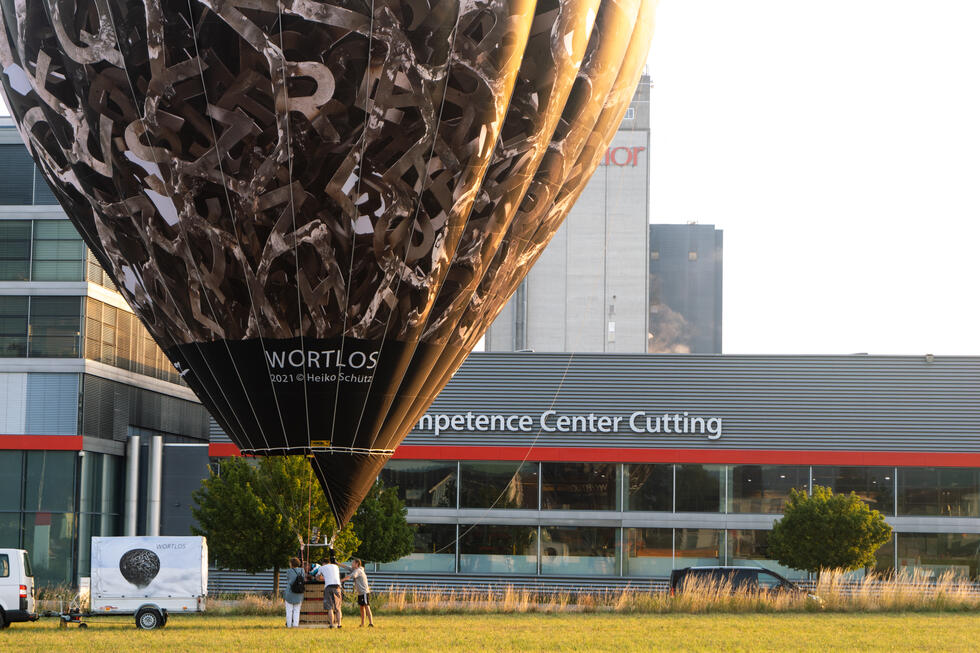
About the project
Schütz has the letters laser-cut on Bystronic machines by the company Michel Apparatebau AG in Herzogenbuchsee. Schütz is a regular visitor to the company, but he does not have to show up at Michel Apparatebau to place the order for the letters: He uses Helvetica exclusively as his font, and for production he simply specifies the thickness of the sheet metal and the height and number of letters to the metal workshop. "I use the Os as connecting pieces by sawing them up," he says.

